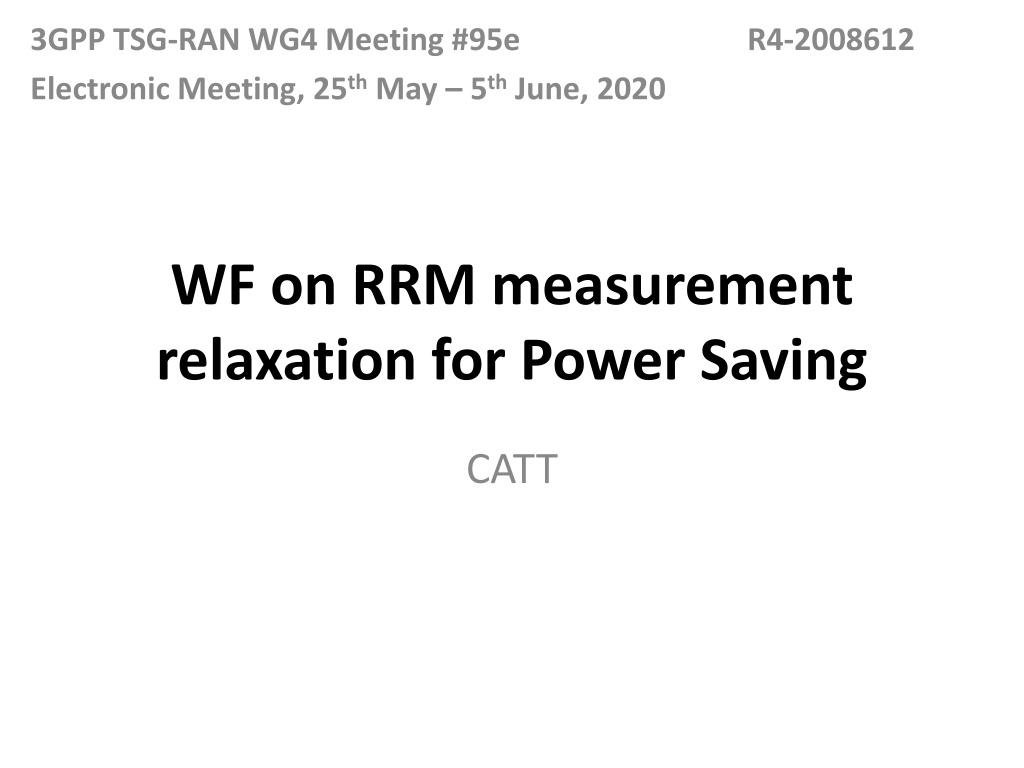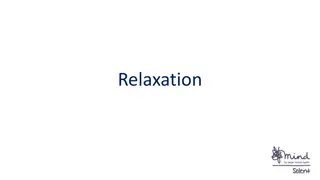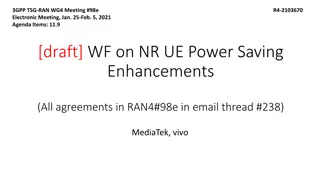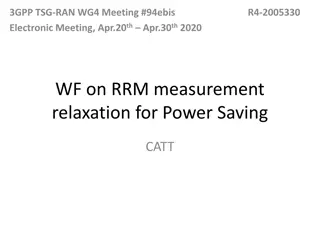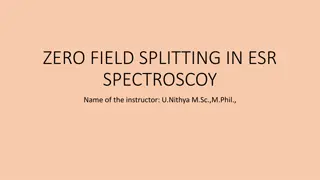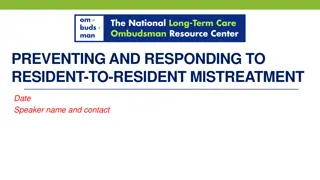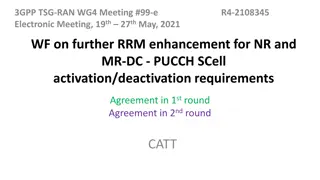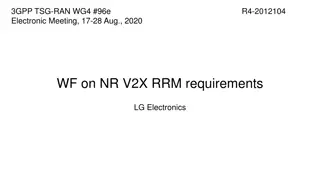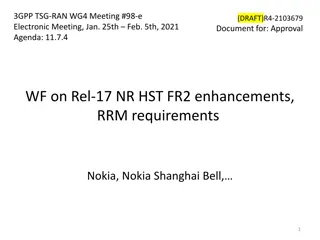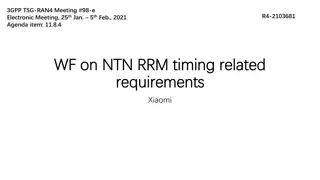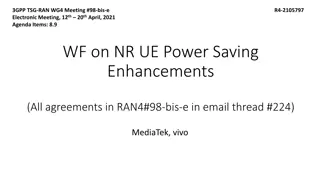Guidelines for RRM Measurement Relaxation in Power Saving Scenarios
Guidelines are provided for the relaxation of measurements in power saving scenarios for wireless network devices. The document outlines the scaling factor of measurement intervals, relaxation methods for different criteria fulfillments, and minimum requirements during transition periods between scenarios. The evaluation rate triggering measurement relaxation is also specified in accordance with defined evaluation rates for serving cells.
Download Presentation

Please find below an Image/Link to download the presentation.
The content on the website is provided AS IS for your information and personal use only. It may not be sold, licensed, or shared on other websites without obtaining consent from the author. Download presentation by click this link. If you encounter any issues during the download, it is possible that the publisher has removed the file from their server.
E N D
Presentation Transcript
3GPP TSG-RAN WG4 Meeting #95e Electronic Meeting, 25thMay 5thJune, 2020 R4-2008612 WF on RRM measurement relaxation for Power Saving CATT
WF on RRM measurement relaxation scaling factor of measurement interval The same value is used for scenario#1 and scenario#2 The value of scaling factor is 4 The measurement relaxation method for higher priority or equal/lower priority applies to inter-RAT measurement with higher priority or equal/lower priority. When network configures the parameters of both low mobility and not-at-cell-edge criteria, if network indicates option b, the relaxation method corresponding to scenario #3 when both relaxation criteria have been fulfilled
WF on RRM measurement relaxation When Srxlev > SnonIntraSearchP and Squal > SnonIntraSearchQ, if criteria of low mobility and not in cell edge are both fulfilled, UE can stop both equal/low priority and high priority inter- freq/inter-RAT measurements 1 hour time interval applies to the measurement relaxation since last measurement for cell reselection for higher priority carriers When Srxlev > SnonIntraSearchP and Squal > SnonIntraSearchQ and only criteria of low mobility is configured, if the low mobility criteria is fulfilled, UE can stop equal/low priority measurements and the UE measures higher priority inter-frequency/inter-RAT layers at least every Thigher_priority_search.
WF on minimum requirement at transition period When switching from scenario #1 or #2 to scenario #3, the UE shall fulfil the requirements corresponding to scenario #1 or #2 for N DRX cycles and thereafter switch to requirements corresponding to scenario #3 When switching from scenario #3 to scenario #1 or #2, the UE shall fulfil the requirements corresponding to scenario #1 or #2 upon fulfilling the switching criteria. When switching from normal mode to scenario #1/#2/#3, the UE shall fulfil the requirements corresponding to normal mode for N DRX cycles and thereafter switch to requirements corresponding to scenario #1/#2/#3 When switching from scenario #1/#2/#3 to normal mode, the UE shall fulfil the requirements corresponding to normal mode upon fulfilling the switching criteria.
WF on RRM measurement relaxation The evaluation rate for measurement relaxation mode triggering shall be the same as current serving cell evaluation rate defined in 38.133 RAN4 not specify intra/inter-frequency requirement when the threshold configured for not-at-cell-edge condition is higher than that for cell center condition of SnonIntraSearchP or SnonIntraSearchQ . This rule also applies in SIntraSearchP or SIntraSearchQ . Measurements on EMR carriers should not be relaxed if T331 is running It is up to RAN2 s decision on whether to introduce carrier specific threshold for inter-frequency measurement relaxation.
